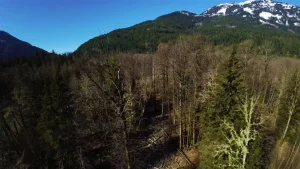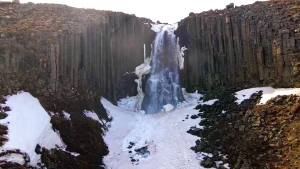NATURAL BEAUTY 8K ULTRA HD
8K
 167
167
 0
0
26-12-2023, 22:57
Earth is unique among the planets in our solar system. Its unique conditions have given rise to all kinds of life, including millions of species of plants and animals 8K. Planet Earth is incredibly diverse because it has high mountains and deep valleys, wet forests and dry deserts, hot and cold climates. Its 200 countries are home to more than 6 billion people.
The name of planet Earth is also special and rare because all other planets in the solar system were named after a Greek or Roman deity, such as Venus, the Roman goddess of love, or Jupiter Zeus in Greek mythology, after the father of all the Olympian gods.
Although we don't feel it, the Earth moves in its orbit at an average speed of about 30 kilometers. During this orbit, our planet is on average 200 million kilometers away from the Sun, a distance that it takes about ten minutes for sunlight to reach our planet. Astronomers define this distance as one astronomical unit on planet Earth, a measurement that serves as a cosmic practice such as travel insurance.
In the hemisphere that is closest tilted to the sun comes summer, and vice versa. In spring and fall, each hemisphere receives the same amount of light. On two specific dates each year, called the equinoxes, both hemispheres are equally illuminated.
The earth is 70 percent water and 30 percent land. Of this amount of water, 96 percent is found in our world's oceans and the remaining 4 percent is found in lakes, glaciers, and the polar caps.
Because the Moon follows an elliptical orbit around the Earth and the Earth follows an elliptical orbit around the Sun, the distance between the Earth and these two bodies changes over time. The average distance between the Earth and the Moon is 400,000 kilometers. The average distance between the Earth and the Sun is about 200 million kilometers.
Earth's atmosphere consists of 77 percent nitrogen, 21 percent oxygen, and trace amounts of argon, carbon dioxide, and water. The five main layers of the atmosphere, from lowest to highest, are the troposphere, stratosphere, mesosphere, and exosphere.
The highest point on Earth is Mount Everest, a Himalayan peak that reaches 8,848 meters above sea level. The first confirmed ascent of the mountain occurred on May 29, 1953. On that day, New Zealander Edmund Hillary and Nepalese Sherpa Tenzing Norgay made the first ever ascent of Everest. They were the summiters of the world.
The name of planet Earth is also special and rare because all other planets in the solar system were named after a Greek or Roman deity, such as Venus, the Roman goddess of love, or Jupiter Zeus in Greek mythology, after the father of all the Olympian gods.
Although we don't feel it, the Earth moves in its orbit at an average speed of about 30 kilometers. During this orbit, our planet is on average 200 million kilometers away from the Sun, a distance that it takes about ten minutes for sunlight to reach our planet. Astronomers define this distance as one astronomical unit on planet Earth, a measurement that serves as a cosmic practice such as travel insurance.
In the hemisphere that is closest tilted to the sun comes summer, and vice versa. In spring and fall, each hemisphere receives the same amount of light. On two specific dates each year, called the equinoxes, both hemispheres are equally illuminated.
The earth is 70 percent water and 30 percent land. Of this amount of water, 96 percent is found in our world's oceans and the remaining 4 percent is found in lakes, glaciers, and the polar caps.
Because the Moon follows an elliptical orbit around the Earth and the Earth follows an elliptical orbit around the Sun, the distance between the Earth and these two bodies changes over time. The average distance between the Earth and the Moon is 400,000 kilometers. The average distance between the Earth and the Sun is about 200 million kilometers.
Earth's atmosphere consists of 77 percent nitrogen, 21 percent oxygen, and trace amounts of argon, carbon dioxide, and water. The five main layers of the atmosphere, from lowest to highest, are the troposphere, stratosphere, mesosphere, and exosphere.
The highest point on Earth is Mount Everest, a Himalayan peak that reaches 8,848 meters above sea level. The first confirmed ascent of the mountain occurred on May 29, 1953. On that day, New Zealander Edmund Hillary and Nepalese Sherpa Tenzing Norgay made the first ever ascent of Everest. They were the summiters of the world.
Show more
Comments
Other 8K video

8K
 1 288
1 288
 0
0
17-03-2025, 23:13
Experience extreme slow motion in TRUE 8K Video Ultra HD at 120FPS—capturing every detail with stunning clarity. Our 8K Ultra HD video collection features breathtaking footage of nature, wildlife,
Download Now

8K
 491
491
 0
0
17-03-2025, 23:13
Experience ultra high definition like never before with extreme slow motion footage captured in 8K Ultra HD at 120FPS. Designed to showcase the full potential of your 8K resolution TV and devices,
Download Now

8K
 241
241
 0
0
17-03-2025, 23:13
Experience the beauty of extreme slow motion with this high-quality 8K Ultra HD video, captured at an incredible 1000FPS and mastered in 8K HDR 60FPS for vibrant clarity and depth. Perfect for
Download Now







